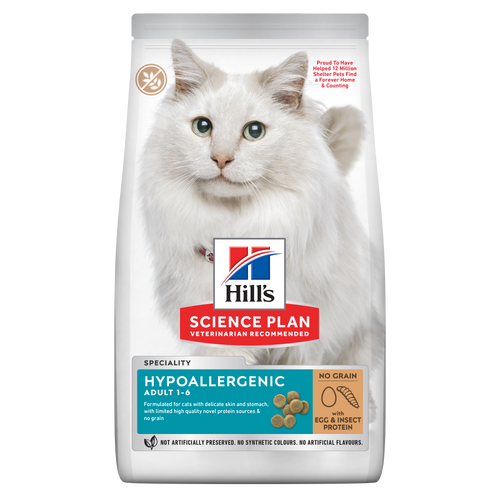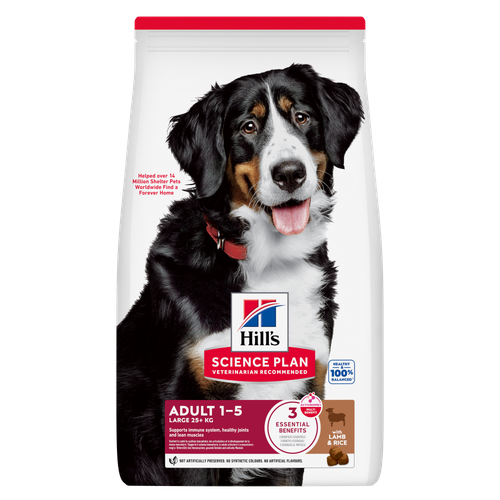
-
Find the right food for your petTake this quiz to see which food may be the best for your furry friend.Find the right food for your petTake this quiz to see which food may be the best for your furry friend.Featured products
 Small & Mini Mature Adult 7+ Dog Food
Small & Mini Mature Adult 7+ Dog FoodHill's Science Plan Small & Mini Breed Mature Adult Dog Food with Chicken is a complete pet food, specially formulated with ActivBiome+ Multi-Benefit Technology.
Tailored nutrition to support graceful ageing in small dogs. Specially made with a synergistic blend of nutrients for energy & vigor.Shop Now Perfect Digestion Small & Mini Adult Dog Food
Perfect Digestion Small & Mini Adult Dog FoodHill's Science Plan Perfect Digestion Small & Mini Breed Adult Dog Food with Chicken & Brown Rice supports ultimate digestive well-being & a healthy microbiome.
Shop Now Perfect Digestion Large Breed Puppy Food
Perfect Digestion Large Breed Puppy FoodPrecisely balanced nutrition with Hill's ActivBiome+ prebiotic blend actively contributes to supporting digestive health and overall well-being to help your pet feel their best
Shop NowFeatured products Hairball & Perfect Coat Adult Cat Food
Hairball & Perfect Coat Adult Cat FoodHill's Science Plan HAIRBALL & PERFECT COAT Adult cat food with Chicken is specially formulated to effectively help avoid hairball formation in adult cats while promoting a beautiful coat. Thanks to its mix of essential Omega-6 fatty acids, this food benefits the cat's skin and fur keeping them healthy and shiny. Our Advanced Fibre Technology helps reduce hairballs by naturally promoting their passage through the gut. This food is formulated with high-quality protein for a perfectly balanced, great-tasting recipe.
Shop Now Kitten Food
Kitten FoodTender chicken chunks in gravy for kittens, with omega-3s for healthy eye & brain development and high-quality protein to support muscle growth. With balanced minerals to promote strong bones & teeth.
Shop Now Hypoallergenic Dry Cat Food
Hypoallergenic Dry Cat FoodHILL'S SCIENCE PLAN Hypoallergenic Adult cat food with egg & insect protein is a complete pet food for adult cat 1–6 years old. It's formulated for cats with delicate skin and stomach, with limited high quality novel protein sources & no grain.
Shop Now -
Dog
- Dog Tips & Articles
-
Health Category
- Weight
- Food & Environmental Sensitivities
- Urinary
- Digestive
- Joint
- Kidney
-
Life Stage
- Puppy Nutrition
- Adult Nutrition
- Senior Nutrition
Cat- Cat Tips & Articles
-
Health Category
- Weight
- Skin & Food Sensitivities
- Urinary
- Digestive
- Kidney
-
Life Stage
- Kitten Nutrition
- Adult Nutrition
Featured articles The Right Diet For Your Pet
The Right Diet For Your PetLearn what to look for in healthy pet food & nutrition, including ingredients, quality of the manufacturer, your pet's age, and any special needs they have
Read More Pet Food Storage Tips
Pet Food Storage TipsWhere you store your cat and dog food can make a big difference in the quality and freshness once it is opened. Here are some common questions and recommendations for optimal storage for all of Hill’s dry and canned cat and dog food.
Read More Understanding Your Pet's Microbiome
Understanding Your Pet's MicrobiomeLearn what a pet's microbiome is, how it contributes to your pet's gut & overall health, and why nutrition is important in maintaining healthy microbiomes.
Read More -


When it's raining out, the last thing you want to do is leave your warm, dry home — and your pup is most likely feeling the same. But unless you've trained your dog to relieve themself in a specific area of the house, going outside in poor weather is necessary to avoid accidents and prevent your pet from holding it in. Here's what to do if your dog won't relieve themselves in the rain.
Why Your Dog Won't Go Out in Rain
One of the most common reasons why your dog won't pee in rain is simply because they don't like being rained on or having wet paws. Walking around on the squishy, wet earth and getting mud squeezed into your paws must be an awful feeling.
If your dog is young, they simply might not have had enough exposure to the elements, and because of this, they're more likely to push back when you try to get them to use the bathroom.
Similarly, if you haven't potty trained your dog, they haven't learned the skills to go on command. Adding wetness to the mix makes them even more likely to avoid the experience.



Tasty Tips
Helping Your Dog in the Rain
Here are three tips for helping your dog relieve themself in the rain:
- Get them accustomed to wet paws. If your dog seems bothered by wet feet, there are a few ways you can train them to be more comfortable with wet paws. The easiest option is to feed your dog treats or even their meals on wet grass (still in their bowl of course). The more positive experiences they have with wet paws, the less it will bother them — especially if you're putting in effort to clean and dry them afterward.
- Purchase gear to make your dog more comfortable. Accessories can also be helpful if you're worried about why your dog won't go out in rain. For example, rain boots, a rain jacket and a large umbrella could resolve some of your dog's issues. The accessories may take a little getting used to, but your pet may prefer them over getting wet.
- Take your pup for a walk. It may be inconvenient, but you might find that walking your dog in the rain is the easiest and fastest way to get your furry friend to go in inclement weather.
What About Other Types of Weather?
If your dog won't pee or poop in rain, chances are they'll also feel uncomfortable going outside when it's snowing or thundering. In fact, you may have to take extra care during these elements.
Thunderstorms can be worrisome for dogs. Reader's Digest suggests that some dogs have noise phobias and they can sense the static electricity, or change in ions and barometric pressure, as well as a few other factors. If you know a storm is coming, try to get your pet to relieve themselves first. If that doesn't work, wait for a break in the storm before heading outside.
And remember, there are other options for getting your dog to relieve themself in bad weather. For example, litter boxes don't have to be just for cats. Some dogs can be trained to use them as well. There are also potty pads to use indoors with various textural options, like real grass.
Whatever the reason your dog is that your dog doesn't like to go out in the rain, with a little bit of planning, a lot of patience, some training and some extra love they will start to understand what they need to do and will quickly go out to do their business and come right back in.


Erin Ollila believes in the power of words and how a message can inform—and even transform—its intended audience. Her writing can be found all over the internet and in print, and includes interviews, ghostwriting, blog posts, and creative nonfiction. Erin is a geek for SEO and all things social media. She graduated from Fairfield University with an M.F.A. in Creative Writing. Reach out to her on Twitter @ReinventingErin or learn more about her at http://erinollila.com.
Related products

Hill's Science Plan Perfect Digestion Small & Mini Breed Adult Dog Food with Chicken & Brown Rice supports ultimate digestive well-being & a healthy microbiome.

Hill's Science Plan Large Breed Adult Dog Food with Lamb & Rice is a complete pet food, specially formulated with ActivBiome+ Multi-Benefit Technology.
This food is specifically designed to fuel the energy needs of large breed dogs during the prime of their life.

Hill's Science Plan Small & Mini Breed Mature Adult Dog Food with Chicken is a complete pet food, specially formulated with ActivBiome+ Multi-Benefit Technology.
Tailored nutrition to support graceful ageing in small dogs. Specially made with a synergistic blend of nutrients for energy & vigor.

Precisely balanced nutrition with Hill's ActivBiome+ prebiotic blend actively contributes to supporting digestive health and overall well-being to help your pet feel their best
Related articles

Discover the causes, signs, and treatments of kidney disease in dogs and find methods of supporting your dog's kidney health. Learn more at Hill's Pet South Africa.

Dog obesity is a significant problem - learn more about helping your dog become trimmer and healthier through improved nutrition.

Discover how the field of dog science is giving us more and more insights into the inner workings of our furry best friends.

Learn about snake bites on dogs, including clinical symptoms to look for, what to do if you think your dog was bitten, and treatment & prevention options.

Put your dog on a diet without them knowing
Our low calorie formula helps you control your dog's weight. It's packed with high-quality protein for building lean muscles, and made with purposeful ingredients for a flavorful, nutritious meal. Clinically proven antioxidants, Vitamin C+E, help promote a healthy immune system.
Put your dog on a diet without them knowing
Our low calorie formula helps you control your dog's weight. It's packed with high-quality protein for building lean muscles, and made with purposeful ingredients for a flavorful, nutritious meal. Clinically proven antioxidants, Vitamin C+E, help promote a healthy immune system.

